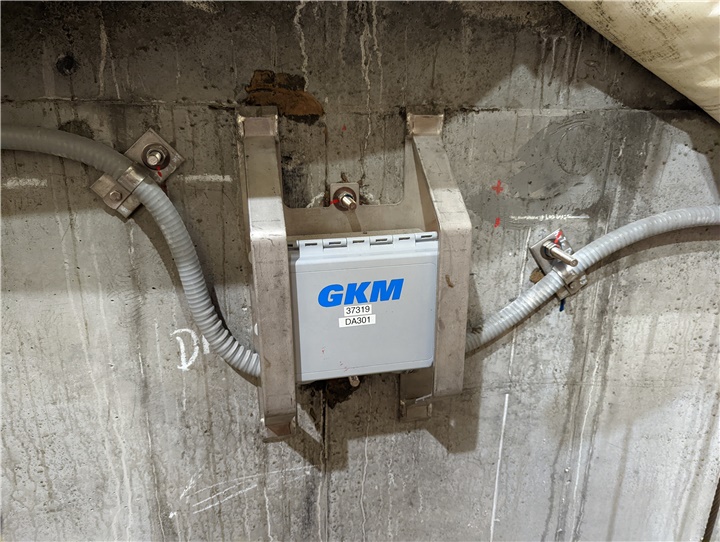Challenge
GKM Consultants, a Worldsensing partner, was asked to provide structural health monitoring instrumentation for the final liner of the nine-hundred-meter-deep shafts in a potash mine in Saskatchewan, Canada that is expected to start production in a few years. They were previously involved in installing a geotechnical monitoring system during shaft construction and were, during construction of the final liners, deploying a large-scale concrete maturity monitoring project. Installing structural health sensors was a natural extension of the work done. The shaft liners consist of an outer continuous welded steel liner with a 1 to 2 meter thick high-strength non-reinforced poured concrete designed and formulated specifically for the project. The inherent risks to operations for this mine posed by water ingress, the design life of over 100 years, the new construction methods and the new concrete recipe each provided ample justification to install long-term structural health monitoring sensors.
Solution
A wide range of sensors were deployed including embedded strain gauges in concrete (78), welded strain gauges attached to the steel outer liner (22), displacement transducers between joints (24) and temperature sensors (22). Each set of instruments is read by a Loadsensing vibrating wire node which transmits its readings every hour to the gateways located in the headframes. The data from the gateways is sent to the Connectivity Management Tool (CMT) for network monitoring and is also automatically forwarded to the Bentley Infrastructure IoT’s software, Sensemetrics, for polling and further analysis.
Benefits
The work of the mine workers, both local and remote, is enhanced by automated validations that would have otherwise been needed to be done manually. The remote access to the system not only contributes to the safety of the workers who don’t need to physically access the instruments to gather data but also to savings in terms of manpower deployment and cable installation. Mine operators and monitoring providers don’t need to worry about sensor and system compatibility and instead immediately take advantage of the data collected, even as early as the construction phase, to make design adjustments and improve the structure. Installing low-power monitoring equipment that can last for years at the early stages of the project may mean immediate recovery of the costs as soon as the production at the mine begins. Plus, using a single monitoring system to monitor geotechnical, structural health and other parameters helps to centralize the data in one system. This may make it easier to perform network health monitoring and to relocate and reuse equipment for the next phases or to expand using the existing network as foundation.
Advantages
- A fully integrated and end-to-end monitoring system. Worldsensing and Bentley have developed a solution that allows users to swiftly collect, store, configure, and visualize trusted data in all project phases, even as early as the construction stages of a mine or any infrastructure asset.
- 24/7 and remote access to structural and network health data. The Connectivity Management Tool and online, cloud-based data visualization software such as Bentley Infrastructure IoT’s Sensemetrics platform provide a single repository of historical data which may be used for further analysis.
- Real-time alerts and reports. Immediate notifications are sent should any instruments go beyond the user defined thresholds or design limits. In addition to alerts on current values, the Sensemetrics platform also manages alerts on the rate of change of individual sensors, on the data age of each sensor and on the data quality.
‘’The integration and reporting have been seamless and highly reliable since the start of the project in 2019. Trust in the structural health monitoring system lets the mine owner focus on the next steps of the mine construction. Vincent Le Borgne - Mining R&D Manager, GKM Consultants’’


